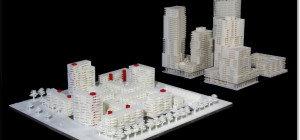 No matter who you are in the world, you have ideas. Everybody has ideas, and some of those ideas might even be worth developing. However, no matter how good the idea is, nobody is going to pay for an ‘idea man.’ They want to be assured that the idea is actually going to make them something. Investments, loans, and eventually profits are all made with a plan and, when it comes to manufacturing, a prototype.
No matter who you are in the world, you have ideas. Everybody has ideas, and some of those ideas might even be worth developing. However, no matter how good the idea is, nobody is going to pay for an ‘idea man.’ They want to be assured that the idea is actually going to make them something. Investments, loans, and eventually profits are all made with a plan and, when it comes to manufacturing, a prototype.
Getting from a workable idea to the prototype is a daunting task. However, the rewards for doing so are well worth the effort.
1) Assess the Competition
Odds are, whatever you are creating does the same thing as another product on the market. It is very rare that somebody creates a device to do something people never realized they wanted to be done. As the Good Book says, “Nihil novi sub sole”. There is nothing new under the sun. So, you want to assess the competition.
Figure out not just how their device works, but also how you can improve upon it. Consider why somebody would want to buy your version as opposed to the other version. Is your model cheaper? Does it last longer? Is it more efficient? Does it perform related tasks?
In short: find out why somebody would want to buy what you want to create before going through the process of creating it.
2) Create a Paper Sketch
Once you have a rough idea of what you want to make and how your idea is better than the competition, sketch out what you are after. It does not have to be detailed concept art, it simply has to convey what you are after. In addition to rough sketches of what the product should look like, include dimensions, feature information, and more. These notes should sketch out everything you want your product to do – if you come up with an idea not included in the notes, then make sure to add it in.
3) Design!
Once you have your concept down on paper, your next phase is the detailed design. This design is what you will ultimately give to whoever you hire to build the prototype for you.
Most designers use AutoCAD, though any high-quality design program is a valid option for this step. Due to the specialized knowledge required, you will likely need to hire a professional designer such as Plethora for this step. If you know how to use AutoCAD yourself, there is nothing wrong with taking the time to do your own design.
For the rest of us, a professional can take your concept and produce a workable design.
4) Model
Once you get past the design phase, you will want to create a model. This model can be a scaled down version of what you envision the final product to be, or a digital recreation. The model is primarily for marketing purposes and intended to help draw in investors. This can help keep your idea afloat while you’re waiting for the final prototype to be constructed.
Another use for a model is that it can help you edit your design. You might find that, when you try to model your design, the result can’t do what you need it to do. Depending on what you are trying to build, there are dozens of factors that play into the quality of the final product. Proper modeling can help you discover some of these factors before going into prototyping.
5) Build the Prototype
You have your idea designed, you’ve done some modeling to prove that it can work. Now you are ready to build the prototype. While you can do this in-house, depending on the product it might be cheaper to find a dedicated manufacturer, such as Plethora. Either way, make sure that your design is as perfect as you can make it – obviously once you start building the prototype you can’t change the design without having to start from scratch.
You’re Done! Happy Testing!
That’s it, the prototype is finished! At this point you should begin doing every test you can think of to see how your prototype stands up to its function. You will likely find dozens of flaws and limitations you didn’t expect and have to modify your design countless times and start over again – but that is OK. Invention is more persistence than anything else. Once you have a prototype you are happy with, you can move on to manufacturing. For now though, you have something that you can call your own.







